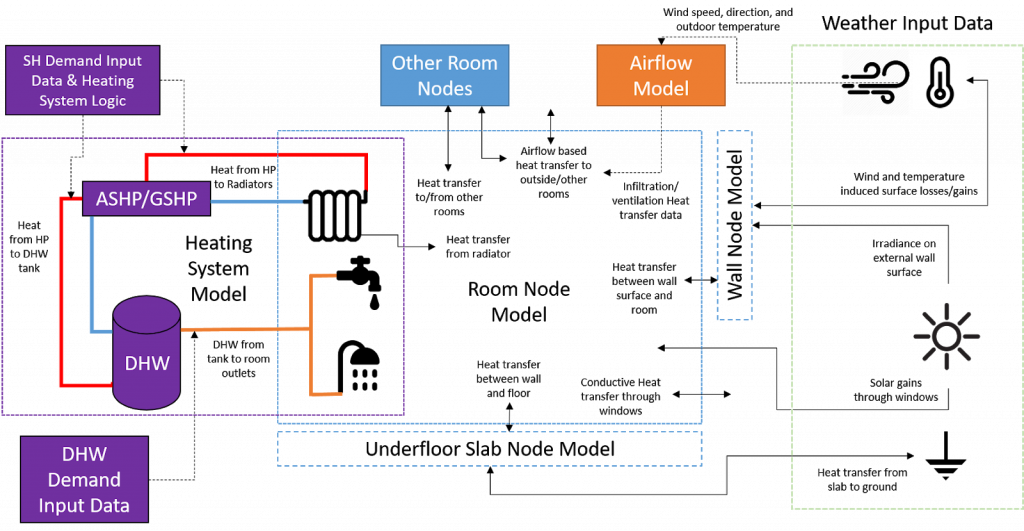To address the availability issues surrounding residential heat pump (HP) profile data for energy systems researchers, I have developed the ‘Electrified Water And Space-heating Profiler’ (EWASP) tool. The tool is accessible to non-experts, runs on software available to all academics, and considers a large range of residential archetypes.
The majority of researchers studying future energy systems are required to consider building energy demand at some point. Sometimes the data required is quite simple (e.g. annual demand), and can easily be obtained with a google search. In reality, most modelling at the distribution network/individual house level requires much more granular data, and in great bulk (think hundreds of houses worth of data).
Such granular data is available for general household appliance demand and for solar generation, but unfortunately there are no readily available tools for quick and easy synthesis of HP electrical demand profiles.

Whilst profile modelling is technically possible in professional building simulation suites such as EnergyPlus, the majority of energy system researchers lack the expertise or time required to operate them, and do not need the level of choice that such packages offer. For example, a researcher may need to know how envelope improvements affect ASHP operation, but will probably not want to manually define these envelope changes at the material level.
As part of my involvement in the Active Building Centre Research Programme, I have developed the EWASP model to address these problems. The model runs in in the MATLAB/Simulink environment, and simulates the electricity demand profiles of HP systems providing space heating and DHW to residential buildings at 5 second time intervals. The major advantage of my model is its ability to synthesize a batch of these profiles with very few inputs from the user; the user need only define the building age, type, technology ownership and orientation properties. The model will then automatically size all other system components, assign a sensible layout given the building age and type, and run as many times as requested (heating preferences and occupancy profiles are randomly assigned at the start of each run)
If the user needs more control, they may manually define the building layout, and can add extra control rules via an interface. I have managed to use this interface to represent energy storage systems, dynamic thermostat setpoints, and grid signal based control.
When comparing the output of the model to field data recorded from an EA technologies test house, I was surprised to find that the simulated space heating profiles were usually within 10% of those observed in real life, in terms of cycle lengths and energy consumption. Additionally, the preprogrammed archetypes matched the heat loss that would be expected of their real life counterparts to within 10%.
I will soon make the tool freely available to researchers and non-researchers via GitHub, and will be publishing an article detailing its operation from a technical perspective. Hopefully it will make your life as an energy researcher easier, and allow you to explore a wider range of ideas.


